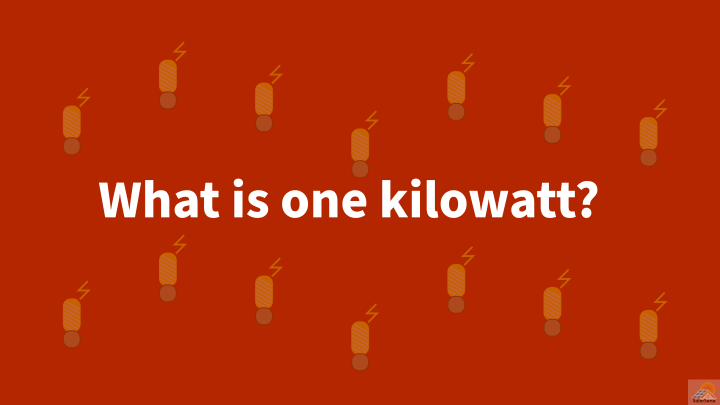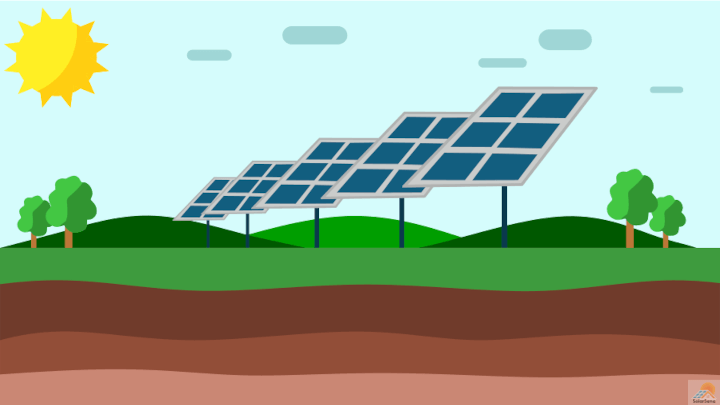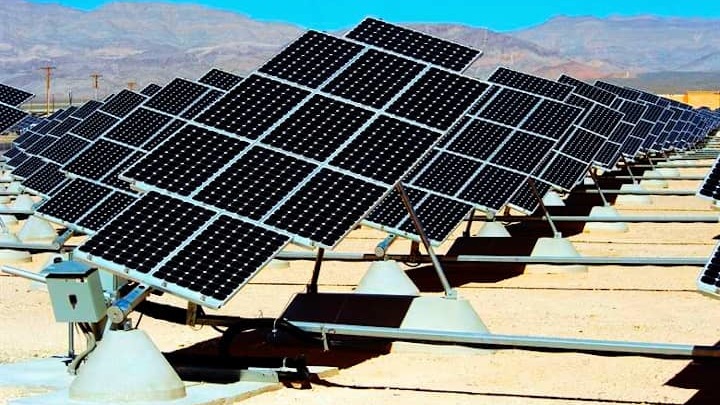The kilowatt is a very common unit of power that we see. Many of our home appliances require electricity in kilowatts. For example, the electric furnace that we use to heat our home takes around 10 kilowatts or higher. The use of the kilowatt is not only limited to our home devices but also many industrial products, like pumps, motors, machines operate in kilowatts.
In this article, we will try to understand what a kilowatt is. And we will also cover some practical examples to extend our sense of the kilowatt.
What is a kilowatt?
A kilowatt is a derived unit of power and equal to one thousand watts. The kilowatt is a very useful unit when defining the power usage of many domestic appliances. The prefix “kilo” means one thousand, so one kilowatt is one thousand watts. “kW” symbolizes the kilowatt.
1 kW = 1000 W
Since one watt is one joule per second, we can also define the kilowatt in terms of the joule. One kilowatt is one thousand joules per second. Here, the joule is a unit of energy.
1 W = 1 J/s
1 kW = 1000 W = 1000 J/s
From the above, we can say one kilowatt is also equal to one thousand joules produced or spent per second.
Practical examples
The kilowatt is a more practical unit than any other unit of power. Here are some examples.
1 kW = 25 laptops
Typical laptops consume 15 to 45 W on active screens. Taking 40 W, we would need 25 laptops to reach one kilowatt of power requirement.

1 kW = 10 Bulbs
A 100-watt incandescent bulb produces 1600 lumens, which is enough to light a small- and medium-sized room. A 100-watt bulb will consume 100 watts of power. And if we light 10 such bulbs, the power devoured by them will be 1 kW.
1 kW = 4 solar panels
Solar panels available in the market for residential and commercial use give a wattage between 250 and 400 W. This wattage is rated power, which means power produced in complete sunshine. Assuming 250 W of power, we would require around four solar panels to generate electricity close to one kilowatt.
However, this is true only in the ideal condition—clear weather and complete sunshine. In reality, we would require more than ten panels to reach 1 kW.
1 kW = one American home
An American utility user consumes 1.2 kW of electricity on an average basis. Thus, we can say an average electricity consumption of an American home is nearly equal to one kilowatt.
Now, this interpretation may not hold when we look at regional power consumption. Since the United States has vast geography, the power requirements of Americans will be different in different locations of the nation. For example, the people in Hawaii need less power than the people in Texas.
Space heater = 1.5 kW
Space heaters are ideal for heating the living room and bedroom. They normally work on electric supply. A conventional space heater consumes 1.5 kW of power to heat the air in your room.
Dishwasher = 1.8 kW
Around 80 million households in the United States have a dishwasher installed in their homes. They are very effective in doing what they say. The working of the appliance is very simple. Electric current is used to heat water, and the heated water cleanses the plates. Although these machines save time and energy for people, they add up utility bills. A typical dishwasher draws 1.8 kW of power.

Central air conditioner = 3.5 kW
Air conditioning is very common in America and is found in 87% of American homes. They keep your homes cool and improve thermal comfort. There are different air conditioners that deliver different performance. A typical large conditioning system, like a central conditioner, draws a significant amount of power. And the numbers are normally above 3 kW for a central conditioning system.
Usain Bolt = 8 kW
Usain Bolt is the fastest sprinter as of 2020. A study estimates that Bolt dissipates 81.6 kJ of energy in 10 seconds over a race. So, the average power produced by him will be 8.16 kW.

Vehicle engine = 89.52 kW
An automobile engine burns the fuel to produce heat, which is converted into mechanical work. According to Autolist, a typical American car’s engine delivers 120 horsepower, equivalent to 89.52 kW.
Kilowatt (kW) vs kilowatt-hour (kW h)
Another similar term encountered by people is kilowatt-hour. Although similar terminology, they are different and represent different qualities. The kilowatt represents power and the kilowatt-hour is a unit of energy. The former tells the energy spent or produced per unit time, while the latter tells only the amount of energy spent or produced independently of time.
You can think of them as speed and distance. If I say you run 10 miles per hour, I am talking about your speed. Now, if I say you run 10 miles, it only tells the distance you travel irrespective of the time that took to complete the distance.
One kilowatt-hour (kW h) is defined as the amount of energy spent when a 1 kW appliance runs for one hour.
1 kW h = 1 kW × 1 h = 3.6 × 106 J
Conversions
Kilowatt (kW) to watt (W)
As mentioned earlier, one kilowatt is one thousand watts.
1 kW = 1000 W
Kilowatt (kW) to megawatt (MW)
One kilowatt is equivalent to one-thousandth megawatts.
1 kW = 0.001 MW
Kilowatt (kW) to gigawatt (GW)
One kilowatt is one-millionth of one gigawatt.
1 kW = 0.000 001 GW
Kilowatt (kW) to horsepower (hp)
One kilowatt is one-thousand seven-forty-sixths of one horsepower.
1 kW = 1000/746 hp



